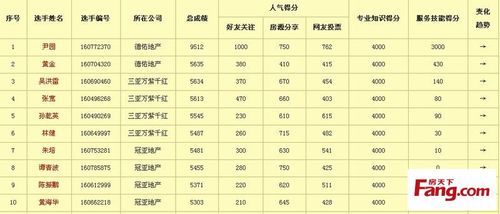Understanding Competition Rankings and Strategies for Improvement
Competitions are prevalent across various domains, from sports and academics to business and arts. Understanding how rankings work and strategies for improving one's ranking can be crucial for participants aiming to excel. Let's delve into these aspects in detail.

How Rankings Work
Rankings in competitions are typically based on several factors:
1.
Performance Metrics
: The most common criterion is performance itself. In sports, this could be goals scored, matches won, or points accumulated. In academic or professional competitions, it might involve scores from judges, peers, or objective metrics like speed or accuracy.2.
Consistency
: Consistent performance over multiple rounds or events often boosts rankings. This shows reliability and skill proficiency.3.
Competition Format
: Different formats influence rankings differently. Knockout stages, roundrobin, or cumulative scoring all impact how rankings are calculated.4.
External Factors
: Sometimes, rankings can be influenced by external factors such as judges' biases (in subjective competitions), environmental conditions (in sports), or unforeseen circumstances.Strategies for Improving Rankings
Improving your competition ranking involves a blend of preparation, strategy, and adaptability:
1.
Training and Preparation
:
Skill Development
: Focus on improving core skills relevant to the competition. For instance, athletes might work on strength, speed, and technique.
Mental Preparation
: Develop strategies to manage stress, maintain focus, and handle pressure effectively.2.
Understanding the Rules and Format
:
Rule Mastery
: Knowing the competition rules inside out can give you a strategic edge. Understand scoring systems and how they translate into rankings.3.
Strategic Planning
:
Precompetition Analysis
: Study competitors' strengths and weaknesses. This allows you to tailor your strategy accordingly.
Adaptability
: Be prepared to adjust tactics based on realtime performance and competition dynamics.4.
Consistency and Adaptation
:
Consistent Performance
: Strive for steady improvement and avoid performance fluctuations.
Adapt to Challenges
: Be flexible in responding to unexpected situations or changes in competition conditions.5.
Review and Learn
:
Postcompetition Analysis
: Assess your performance objectively. Identify areas for improvement and lessons learned.
Feedback Incorporation
: Incorporate feedback from judges, coaches, or peers to refine your approach.Example Scenarios
1.
Sports Competitions
:In soccer tournaments, rankings are often based on points accumulated from wins and draws. To improve ranking, teams focus on enhancing teamwork, individual skills, and tactical awareness.
2.
Academic Debates
:Rankings might be determined by judges' scores on argumentation, delivery, and rebuttals. Debaters improve by researching topics thoroughly, practicing public speaking, and refining their logical reasoning.
3.
Business Competitions
:Startups competing for funding may be ranked based on business model viability, market potential, and pitch quality. Teams improve their ranking by refining their business plans, market analysis, and presentation skills.
Conclusion
Understanding competition rankings involves grasping the metrics and criteria that define success in each context. Improving rankings requires a strategic approach encompassing preparation, adaptability, and a commitment to continuous improvement. By focusing on these aspects, participants can enhance their performance and increase their chances of achieving higher rankings in competitive environments.











